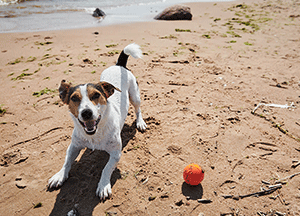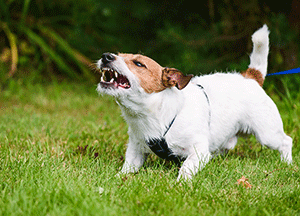Dogs are great communicators. They can tell us how they feel in many ways. They don't speak like humans. Instead, they use facial expressions, body posture, or noises and different signs to tell you what they need. Paying attention to their body language can ensure your canine baby is happy and healthy and build a strong bond with them.
Other Topics You Might Like
Helpful Products You Might Like

Purina Pro Plan Veterinary Supplements For Dog

Milk-Bone Marosnacks For Dog

Benebone Wishbone Durable Dog Chew
"(Paid Links)" 
Tail Wagging
If your dog is wagging its tail, it shows excitement and happiness. However, this is not always true. To know your dog's intentions, observe the following:

A faster tail wagging shows increased excitement. A leftward wag is usually a sign of negative arousal. A wag that involves the whole body typically signifies happiness and is reserved for loved ones.
Raised Hackles

When your dog's hackles are raised, the fur along its back may rise from the shoulders to the tail.
It indicates that your dog is stimulated and is not necessarily a negative occurrence. It shows that your dog is nervous but could indicate intense excitement or curiosity.
Posture
Understanding the distribution of a dog's weight is crucial for interpreting their body language. For instance, a hunched or cowering dog may be experiencing fear and stress. This posture causes dogs to appear smaller and more submissive in the presence of something they fear. This position is more extreme when the dog rolls onto its back and displays its belly. While this can indicate a dog's desire for belly rubs, it can also signal deep stress and anxiety. Suppose your dog is standing or sitting with its body weight leaning forward. In that case, it may indicate interest in something or potentially feeling offended and negatively affected by something.
Facial Expressions
Dogs and humans have similar facial expressions but don't necessarily convey the same meaning. Dogs yawn when they are agitated, whereas people yawn when they are exhausted. They will yawn to calm themselves or others in tense situations. You might try yawning at your dog to help them unwind during stressful moments.
In anxious conditions, your dog may lick its lips. You can misunderstand this as a desire to eat. It relieves the stress of awkward circumstances. A dog's smile is the hardest facial emotion to read. For example, your dog may display its teeth menacingly when it smiles.
Eyes
Observe your dog's eyes to understand their behavior. Are their eyes tense or relaxed? Do they appear squinty, or do they keep looking at something repeatedly? When dogs feel aggressive, their eyes become cold, and they give intense stares to the object of their aggression or their aggressor.
Dogs tend to avoid eye contact when they are stressed. If they deliberately ignore you, it usually indicates that your dog is uneasy. Similarly, if the whites of your dog's eyes are visible, it can be another indication of anxiety and stress.

